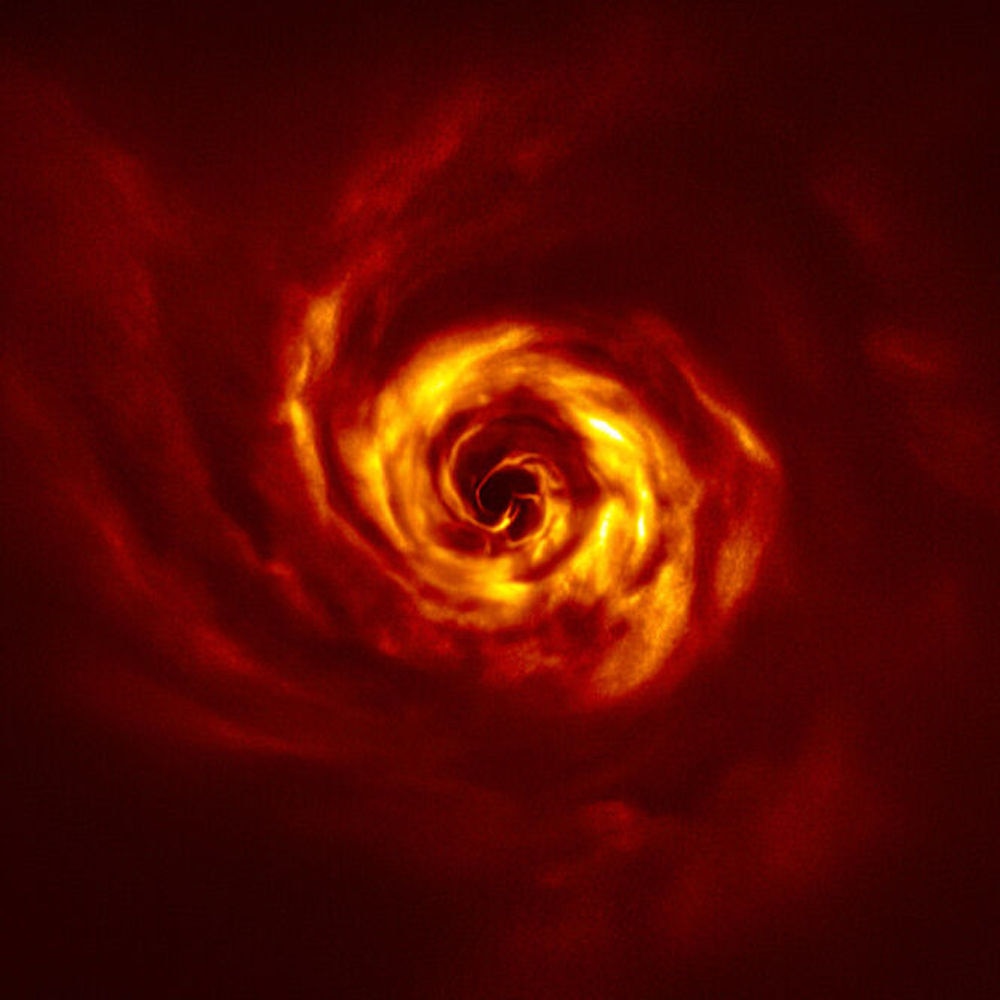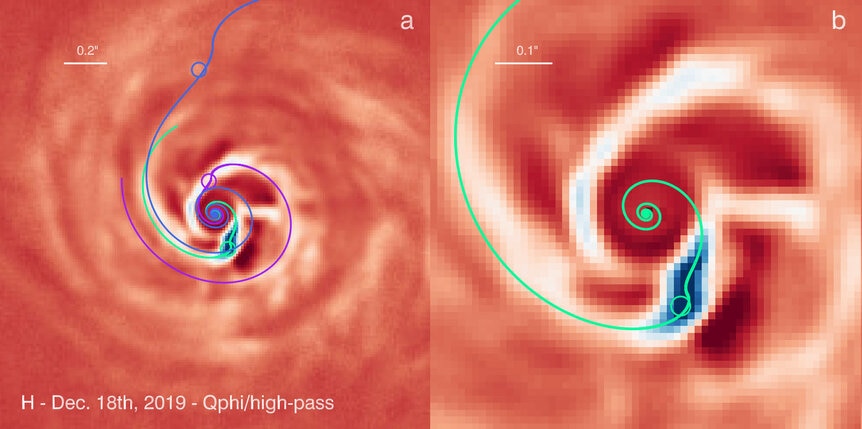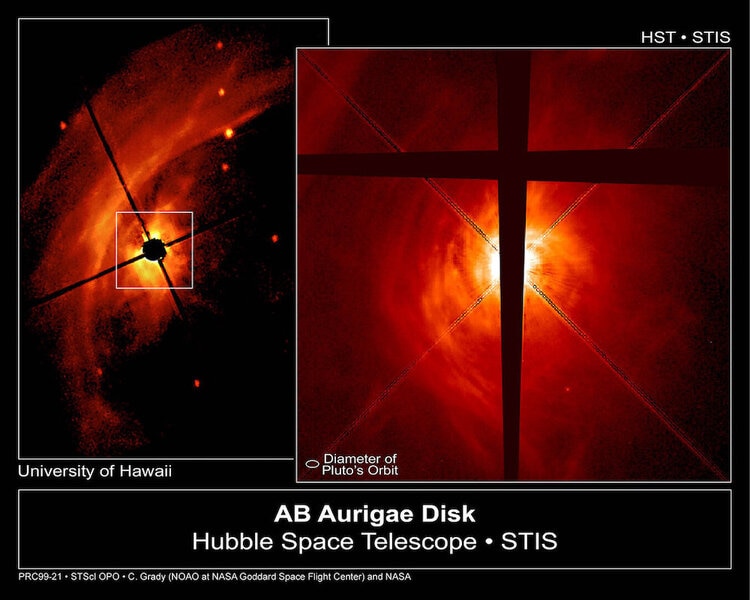Create a free profile to get unlimited access to exclusive videos, sweepstakes, and more!
A spectacular image of a kinky spiral points toward a baby planet forming

A baby planet caught in the act of formation may have been spotted around a nearby star in an observation that's a first of its kind.
The star is called AB Aurigae, and it's about 530 light years away in the constellation of Auriga, the charioteer. The star is quite young, probably about 6 million years old, and is still surrounded by an extensive amount of gas and dust.
We've known about this material for decades, forming a disk around the star. We also know planets form in disks like that, but getting images close enough in to the star is difficult. AB Aur is about twice the mass of the Sun and more luminous, and although it's not quite bright enough to see with the naked eye, it appears pretty bright in a telescope. The disk is lost in the glare.
Over time images got better, and spiral patterns in the disk started showing up. I worked on some Hubble data back in 1999 that showed them pretty well, in fact. Still, this was too far from the star to say anything meaningful about any possible planets.
Then ALMA took a look at very long wavelengths of light, and spotted the spiral pattern going in very nearly to the star itself. They also saw cavities in the disk, places where there was less gas and dust, exactly what you'd expect if a planet were in there sucking down material.
To follow up, images were taken using the Spectro-Polarimetric High-contrast Exoplanet REsearch instrument, or SPHERE, a suite of cameras mounted on the ginormous Very Large Telescope in Chile. What it saw is breathtaking.
WOW. Planetary birth is gorgeous.
This image has been processed in a way that removes the bright starlight, and also amplifies the brightness of the faint disk farther out. The spiral pattern and cavities in the center are obvious. But not only that, at the 6 o'clock position on the inner edge is a little spur of material, brighter than the stuff around it. Here, this'll help:
On closer inspection, that spur is twisted a bit, kinked. In the middle of that twist there, about 4.5 billion kilometers from the star, there may very well be a baby planet still forming. That kink is exactly what you expect!
As a forming planet orbits in the disk, stuff closer to the star orbits faster, and stuff farther out more slowly. The planet pulls on that material, though, changing its orbital speed. What you wind up getting is a spiral wave moving outward through the disk, and another spiral wave moving in toward the star. Both terminate at the planet, that gas and dust falling on to the planet itself (what we call accretion). It's like it's wrapping itself in the disk's arms, feeding from them.
Right near the planet you get a kink in the material as its gravity guides that material in. The astronomers who took this observation made physical models of the spiral arms acting under the planet's gravity and overlaid them on the image itself, enhanced to show more contrast:
Whoa. The models (solid lines) fall right onto the pattern, including the little twist where the possible planet is. The models suggest the mass of the planet is between 4 and 13 times the mass of Jupiter — so it's already a bruiser — and it's likely accreting at a rate of about 0.3% of an Earth mass per year. That may sound like not very much, but it's about 50 billion billion tons per day. Or, more terrifyingly: Imagine 100,000 Mt. Everests falling from space onto the planet every day.
Planet formation is not a gentle process. And it goes on like this for millions of years.
While spiral patterns like these have been theorized around a planet and seen on larger scales in other disks, this is the first time they've been seen so close to a purported planet's position. And the planet may not be alone! There's another brightish spot directly above the star's position in the image, farther out in the disk, and observations hint it may be another planet, somewhat smaller at 3 times Jupiter's mass (the blue circle near the top the left panel in the image above).
So we may not just be seeing a planet form here, but a planetary system.
It's incredible to think we can even see such a thing at all, let alone in a star and disk this young. Our solar system is over 4.5 billion years old, so seeing one in the actual act of formation is a treat. We've spotted quite a few now, at various stages of formation, but this one — where we see the gas streams converging on the planet — is special.
Hopefully it won't remain so for long, as more bouncing baby planets around other stars join it on our list.

















